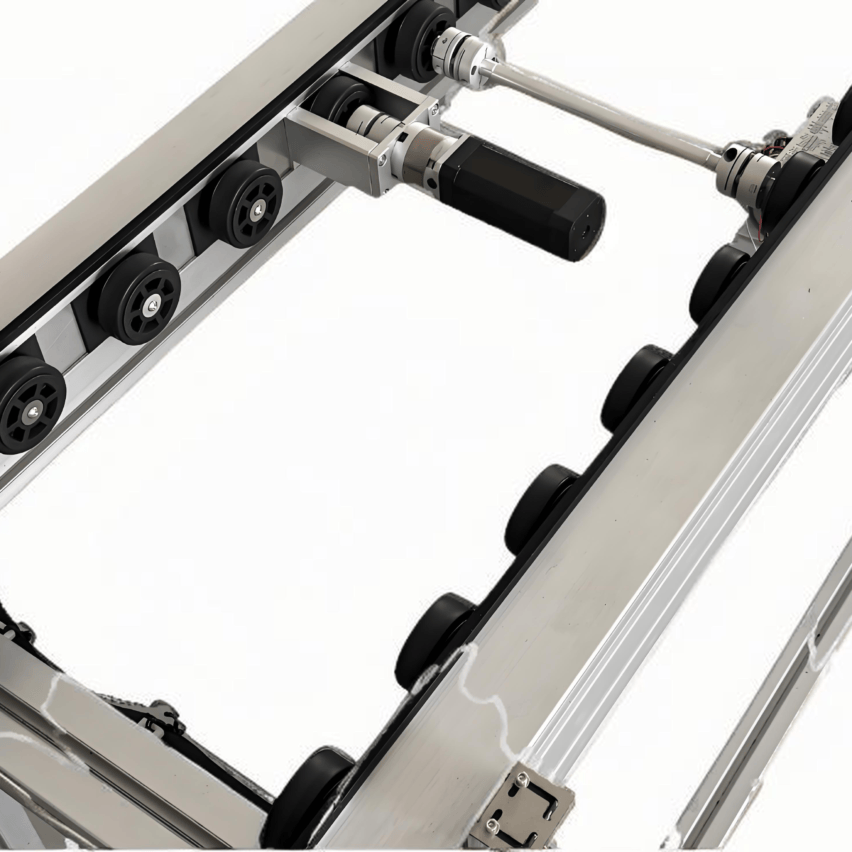Do you often wonder - why is it so difficult to install a wiring harness in an automobile factory? A bunch of wires around and around, workers squatting on their backs to engage in half a day, low efficiency and old mistakes. How do newbies quickly increase the powder? Don't worry, today's chatEfficient harness suspension solutions, is here to solve these pain points! To put it bluntly, it's a smarter way to hook up the harness and make loading the car fasterSurging 30%, the kind of programme that even a white person can get up to speed with quickly.
I. Where exactly is the harness suspension stuck?
Traditional hanging harnesses are like tangled headphone cables - workers have to manually sort out the wires, find the location, insert the connector, the whole cat on tiptoe. More headaches:
- Specification confusion: The wire harnesses of different models are of different thicknesses and lengths, and the production line has to be stopped for half a day when changing the model once.
- anti-dropout problemConveyor line vibrates, wire harnesses fall all over the place, and rework rate soars.
- Space fights: Wiring harnesses and parts are crammed together so tightly that workers can't even insert their hands.
According to a factory, just by picking up dropped harnesses, a production line will wasteOver 200 hours.--enough to build 30 cars!
Second, three tough moves to crack the efficiency bottleneck
1. Modularised portioning: transforming "stews" into "pre-prepared dishes"
Instead of getting your hands dirty in the main thread, why notBreak down the harness into smaller modules in advance. It's like putting together Lego:
- Skateboard assembly line pre-assembly: Insert the wires into the sheath at the independent work station and hang up the skateboard to circulate the work. The main line workers just take the semi-finished products and assemble them, and the threading error rate is reduced by 70%.
- Snap-on extension: With patchwork hooks, 1 unit for short harnesses, 3 units for long seconds, changeover time from 45 mins → 5 mins
- Material Anti-Dumbing Design: Hooking up area to put material by colour zones, take the wrong one? It's impossible!
An engine wiring harness factory measured: modular sub-assembly, the daily output from 180 sets → 250 sets.Efficiency Improvement 38%
2. Dynamic anti-locking: "safety belts" for wire harnesses
Stop letting the harness play free fall! It's all the rage now!dual insurance::
- Self-Locking Hook: Hook with retractable stopper, automatically pops up when vibration is detected and snaps the harness.
- Elastic suspension: Cushion the impact with a spring-loaded plunger that slowly springs back like a rubber band when pulled.
- Bonding tape fixing: Physical locking of female + male tapes, 3 times more secure than cable ties.
A suspension system test result: normal hook drop rate 12% → self-locking hook 0.8%.Rework costs saved $200,000/month
3. Man-machine optimisation: letting equipment suffer for people
Labour saving ≠ fully automatedInstead, they let the machines do the grunt work:
- Flexible Arm Suspension Tool: The controller hangs directly on the robotic arm, and workers can plug in the connector by lifting their hands, without dragging 10 metres of cable.
- Dynamic Speed ChainPLC automatically adjusts the conveying speed according to the workstation's busyness and idleness, accelerating the material supply during peak hours and reducing the speed during idleness to save electricity.
- Sponge Cleaning Channel: Automatically removes dust as the harness passes through, eliminating the need for separate cleaning.
Volkswagen Production Line Test: Collaboration System Reduces Workers' Operating Distance by 60%.Daily loading from 120 units to 156 units
Thirdly, white people must ask: are these programmes difficult to implement?
Q: Is changing the suspension system going to stop production for six months?
A: Re! It's all the rage now.Progressive transformation::
- Change 1-2 workstations for test run on the weekend, and mass production directly on Monday.
- The old hooks are compatible with the new slides, no need to remove the whole thing.
- Training? A master with 2 hours of training, a novice will know it in seconds.
Q: 30% Elevation Bragging Rights?
A: Look at the actual data:
| norm | pre-conversion | after conversion | rise and fall of stock in one day's trading |
|---|---|---|---|
| Single-line daily output | 120 units | 156 units | +30% |
| Retrofit time | 45 minutes | 5 minutes. | -89% |
| Wire Harness Drop Rate | 12% | 0.8% | -93% |
Q: Do costs eat up profits?
A: A factory ledger was exposed:
- Input: skateboard line + self-locking hooks ≈ 800,000
- Benefits: annual savings of $2 million in rework costs + $5 million in revenue generated by building more cars
Payback in 6 months, blood money!
Editor's view
There are just three keys to playing with harness suspension.Don't pile up the main line by dividing in advance, don't drop the chain by locking the harness, don't let the workers suffer by human-machine co-ordination.Don't be intimidated by "techno-fluid". Don't be intimidated by the "technology flow" - to put it bluntly, "use cleverness instead of brute force". Those who cry that the efficiency of the factory can not go, most often stuck in the dare not try new programmes. Think about it, even the car screws are machine screwed, why still let the workers squatting line? At this time - efficient suspension programme is the fast knife!













